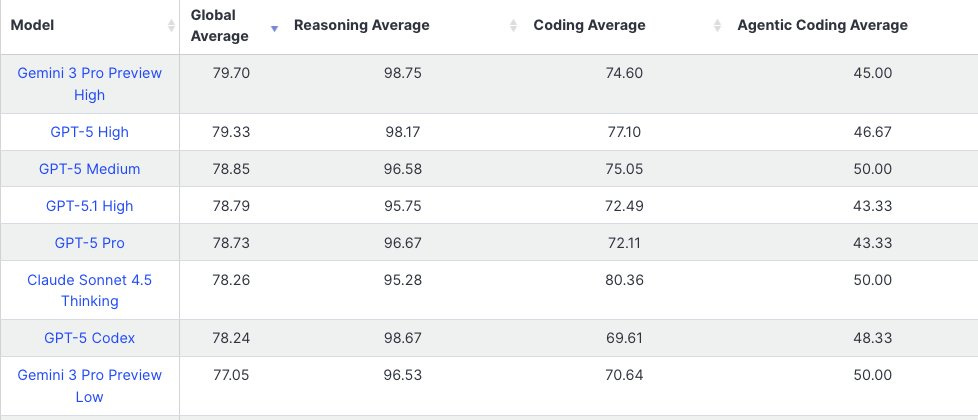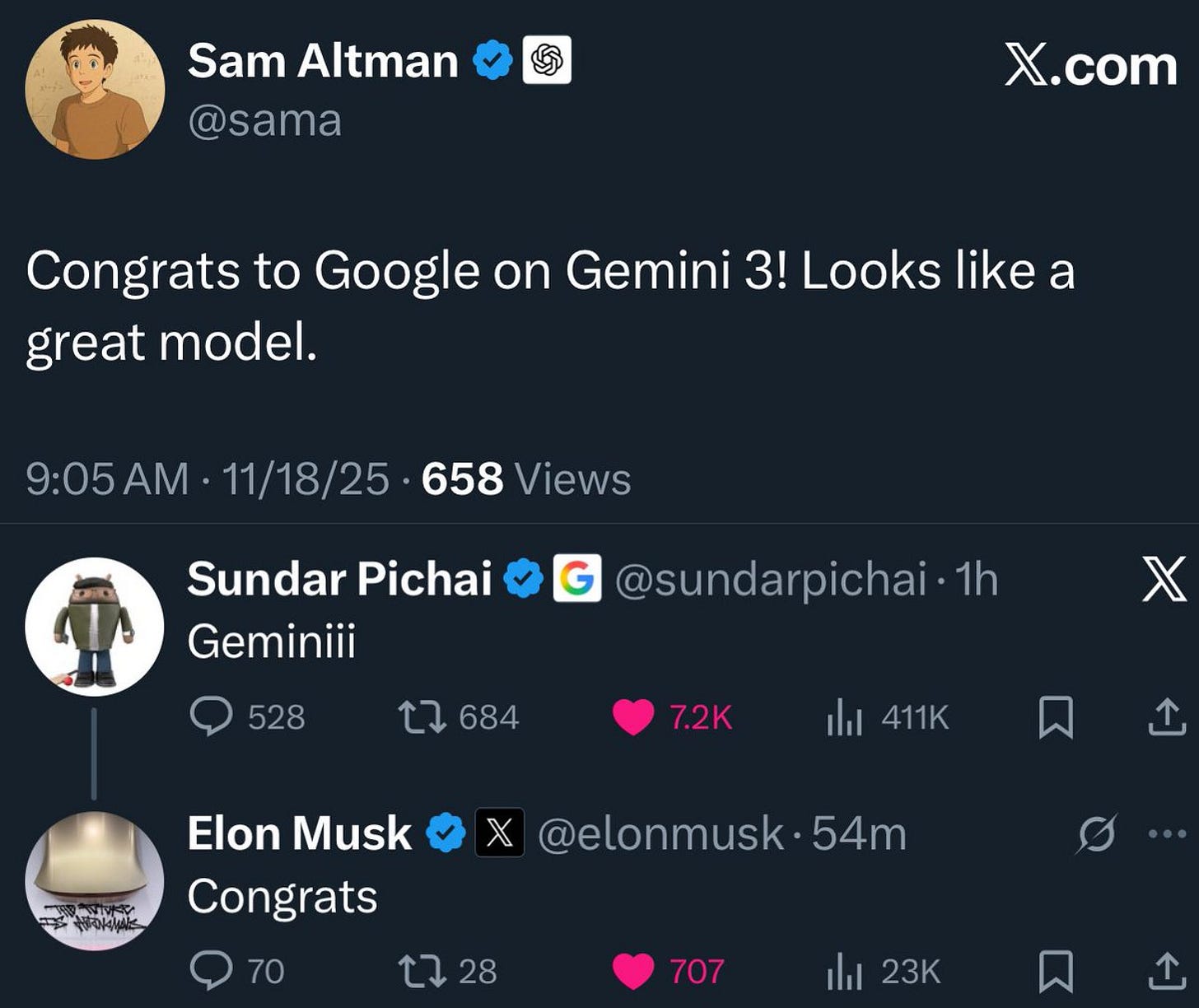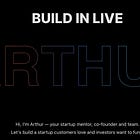The F42 AI Brief #056: AI Signals You Can’t Afford to Miss
From Disney’s AI backlash to Trump’s draft AI order, Gemini 3’s Antigravity IDE and the Gulf GPU reality check
Here’s your Monday dose of The AI Brief.
A week where the future arrived a little faster and a little stranger.
Plenty of breakthroughs, a few shocks, and one or two reminders that we’re building powerful systems on fairly wobbly rails.
📈 Trending Now
The week’s unmissable AI headlines.
💡 Innovator Spotlight
Meet the change-makers.
🛠️ Tool of the Week
Your speed-boost in a nutshell.
📌 Note to Self
Words above my desk.
📈 Trending Now
🎬 Disney faces creator revolt over AI-generated content
→ On Disney’s Q4 earnings call, CEO Bob Iger said Disney+ is exploring partnerships with AI firms to let subscribers generate their own content using generative models. He pitched the idea as a way to boost engagement, but artists and viewers saw it as another step toward replacing human creativity and avoiding paying for real talent.
The backlash was swift: critics warned that “AI slop” threatens jobs and artistic integrity, and many fans saw the move as a cynical attempt to monetise fan labour. Dana Terrace, creator of Disney’s The Owl House, went further—she urged fans on X to unsubscribe from Disney+, pirate her show, and “DRAW AND WRITE AND POST YOUR OWN SHT FOR FREE,” calling Iger and other pro‑AI executives “fcking ghouls”. Her rallying cry—“PICK UP A PENCIL OR DIE”—went viral, turning the episode into a broader debate about whether AI tools in entertainment enrich creativity or exploit it.
→ Founders: Introducing AI without stakeholder buy‑in can backfire; respect creators’ roles and be transparent about how AI will enhance rather than replace their work.
🏛️ Trump administration pushes to pre-empt state AI laws
→ A leaked draft executive order directs U.S. agencies to identify state AI regulations deemed “onerous” and pressure states to abandon them by withholding federal funding or challenging the laws in court. The plan would replace the existing patchwork of rules with a lighter‑touch national framework, arguing that inconsistent state laws hinder innovation and could let China catch up. Republican governor Ron DeSantis and civil‑liberty groups have denounced the draft as a subsidy for Big Tech that erodes states’ ability to protect residents.
→ Founders: Expect shifting regulatory winds; build adaptable compliance strategies that can handle both federal pre‑emption and state‑level protections.
🚀 Google’s Gemini 3 sets new AI benchmarks and debuts Antigravity IDE
→ On 18 November, Google released Gemini 3 Pro, immediately topping the LMArena leaderboard with a 1501 Elo score. The model comes in standard and Deep Think modes; Deep Think scored 41.0% on Humanity’s Last Exam and 93.8% on the GPQA Diamond benchmark. With a million‑token context window and stronger reasoning, it underpins Google’s Antigravity platform, an agentic development environment that lets AI agents use the editor, terminal and browser.
→ Founders: Gemini 3’s Deep Think mode and Antigravity IDE enable longer, more complex workflows—test it against your current stack and be ready to rethink architecture to stay competitive.
🧠 OpenAI’s GPT‑5.1 splits into Instant and Thinking models and powers 24‑hour coding agents
→ OpenAI’s GPT‑5.1 release introduces two models—GPT‑5.1 Instant for quick replies and GPT‑5.1 Thinking for complex reasoning—with automatic routing to select the right one. The companion GPT‑5.1‑Codex‑Max uses “compaction,” pruning its history to span multiple context windows, allowing autonomous coding sessions to run for more than 24 hours. In benchmark tests, GPT‑5.1‑Codex‑Max scored 77.9% on SWE‑bench Verified while using 30% fewer tokens than its predecessor.
→ Founders: Use GPT‑5.1’s adaptive reasoning and compaction to balance speed and depth—ideal for long‑running tasks without ballooning compute costs.
🤖 Microsoft unveils Agent 365 to govern enterprise AI agents
→ Microsoft’s Agent 365 platform provides five core capabilities—registry, access control, visualisation, interoperability and security—to manage AI agents across an organisation. It integrates with Copilot Studio and Foundry to let teams build, deploy and monitor agents inside the Microsoft ecosystem. Microsoft executive Nirav Shah said the tool brings agents “under control” using infrastructure and protections customers already trust.
→ Founders: As AI agents proliferate, governance becomes essential—Agent 365 signals that agent orchestration and security are moving from concept to operational necessity.
💡 Sierra hits $100M ARR in 21 months as enterprises embrace AI agents
→ Sierra, the customer‑service agent startup co‑founded by Bret Taylor and Clay Bavor, announced it reached a $100 million annual revenue run rate just 21 months after launch. Its AI agents handle tasks like patient authentication, returns processing and credit‑card replacement for clients ranging from Deliveroo and Discord to ADT and Cigna. The milestone underscores accelerating enterprise adoption of AI agents beyond tech‑savvy customers.
→ Founders: Rapid revenue growth shows demand for production‑ready AI agents; focus on solving real operational problems rather than demos to capture enterprise spend.
🚓 US charges four in scheme to smuggle Nvidia AI chips to China
→ U.S. prosecutors charged four men for conspiring to export restricted Nvidia GPUs to China using shell firms, fake invoices and overseas drop points. The indictment says the group shipped 400 A100 GPUs and attempted to send HPE supercomputers and H200 GPUs before authorities intervened. They pocketed more than $3.89 million and never applied for export licences, prompting officials to warn that falsifying paperwork to evade chip controls will face stiff penalties.
→ Founders: Export controls on AI hardware are tightening—ensure your supply chain is compliant to avoid severe criminal liability.
CLICK HERE TO GET EARLY ACCESS AND YOUR FREE FUEL UNITS
🇦🇪 UAE | 🇶🇦 Qatar | 🇸🇦 Saudi Arabia
⚙️ AI for Startups — Gulf GPU Special
You’ve probably seen the viral claim doing the rounds: “UAE, Qatar and Saudi have invested $3.6T into US AI.”
Here’s the reality, stripped of spin.
The UAE has agreed a chips-for-capital framework with the US that ties access to up to 500,000 Nvidia advanced GPUs a year to as much as $1.4T of Emirati investment in US assets over the next decade.
Saudi Arabia has pledged to lift its US investment commitments from ~$600B to nearly $1T, with the White House explicitly flagging AI, infrastructure and tech as priority targets.
Qatar’s QIA has already signalled $500B of US investment, saying that most of that will go into technology and AI.
Stack those headline pledges and you’re in the $3T+ range over a decade – which social media happily rounds up to $3.6T. But these are political commitments and MOUs, not wired cash. A lot will slip, stall or get re-priced.
On the ground, though, the build-out is very real. The Stargate UAE campus alone is targeting 5 GW of AI data-centre capacity, with the first 200 MW due online in 2026 and roughly 500,000 GPUs implied for the first 1 GW phase. Recent US export approvals for tens of thousands of Nvidia Blackwell chips to G42 (UAE) and Humain (Saudi) show how tightly this is being choreographed at a geopolitical level.
The Gulf isn’t just “buying chips” it’s trying to buy a permanent seat at the AI table. If you’re building serious AI infrastructure, tooling or model-adjacent software, assume Abu Dhabi, Riyadh and Doha are now strategic markets and a place to build.
💡Innovator Spotlight
👉 Mistral open-sources Codestral-22B and blindsides the model-provider market
👉 Who they are:
– Mistral AI, a Paris-based frontier-model lab.
👉 What’s unique:
– This week Mistral released Codestral-22B under a fully permissive licence, allowing anyone—startups included—to fine-tune, deploy and commercialise it without paying a penny.
– It lands with state-of-the-art coding performance for its size, matching or beating proprietary models that cost orders of magnitude more to run.
– In one move, Mistral has taken direct aim at the assumption that high-end coding models must be locked behind APIs and usage fees.
👉 Pinch-this lesson:
– Prototype with open models first—prove value before burning cash on proprietary APIs.
🛠️ Tools of the Week
This week’s agentic tools hit a different gear. You can feel the shift: less hype, more shipping. These aren’t “nice to know” updates — they’re practical systems founders can plug into their workflow today. If you’re building with agents, this is a very good week.
👉 Mistral open-sources Codestral-22B and resets the coding-model market
👉 Who they are:
– Mistral AI, a Paris frontier-model lab.
👉 What’s unique:
– Codestral-22B shipped this week under a fully permissive licence, letting founders fine-tune and commercialise it freely.
– Delivers near-SOTA coding performance at a fraction of the cost of proprietary models.
– It directly challenges the assumption that elite coding models must sit behind paid APIs.
👉 Source:
👉 Cognition drops Devin 2.0 with 20× faster autonomous coding loops
👉 Who they are:
– Cognition, the creators of the “AI software engineer.”
👉 What’s unique:
– Devin 2.0 introduces parallelised agent loops that autonomously write, test and ship production code.
– Optimised for real-world repos, not demos, and now competitive with human dev velocity on routine work.
– Shows how agentic coding is shifting from novelty to workflow replacement.
👉 Source:
👉 GitHub launches Agent HQ — a control room for developer agents inside VS Code
👉 Who they are:
– GitHub, the world’s dominant developer platform.
👉 What’s unique:
– Agent HQ lets founders orchestrate multiple AI agents directly in their IDE.
– Assign tasks, track progress, and blend model outputs with real repositories.
– Early signs show “multi-agent engineering” becoming the new default dev workflow.
👉 Source:
👉 Google releases Antigravity — its agent-native IDE for multi-agent builds
👉 Who they are:
– Google DeepMind, the creator of Gemini.
👉 What’s unique:
– A coding environment built from scratch for multi-agent collaboration.
– Agents can generate files, test modules and coordinate tasks.
– Early testers say it feels like pairing with three autonomous teammates.
👉 Source:
👉 OpenAI upgrades GPT-5.1 Thinking with compaction — 30% cheaper reasoning loops
👉 Who they are:
– OpenAI, the makers of ChatGPT.
👉 What’s unique:
– The new compaction system shrinks reasoning chains, reducing cost while improving accuracy.
– Long-form coding tasks now run in continuous 24-hour sessions with fewer failures.
– Founders get enterprise-grade reasoning performance without enterprise-grade bills.
👉 Source:
👉 Sierra ships enterprise-grade customer-service agents with 120+ automation skills
👉 Who they are:
– Sierra, Bret Taylor’s agent-powered CX startup.
👉 What’s unique:
– Their agents now handle full customer-service workflows end-to-end, not just replies.
– Adoption jumped after hitting $100M ARR in 21 months.
– Proof that vertical agents, not general chatbots, are winning enterprise wallets.
👉 Source:
👉 Fetch launches Agentverse — a global marketplace for production-ready AI agents
👉 Who they are:
– Fetch.ai, agent-infrastructure specialists.
👉 What’s unique:
– Agentverse lets startups publish, sell and deploy pre-built agents.
– It positions agents like apps — discoverable, monetisable, swappable.
– A strong signal that the “agent economy” is formalising around marketplaces.
👉 Source:
👉 Visier releases MCP for safe enterprise-data access by AI agents
👉 Who they are:
– Visier, a workforce-data platform.
👉 What’s unique:
– MCP enables agents to read internal company data securely without blowing up compliance.
– Solves the #1 blocker for enterprise agent adoption: data access.
– Makes “internal agents” deployable inside HR, ops and finance teams.
👉 Source:
👉 AutoAgent 1.0 brings zero-code multi-agent creation to non-technical teams
👉 Who they are:
– AutoAgent, a no-code agent builder.
👉 What’s unique:
– Lets anyone describe tasks in natural language and assemble multi-step agents.
– Ideal for teams without engineering talent.
– Great for founders validating workflows before writing code.
👉 Source:
👉 AgentScope 1.0 launches as an open SDK for building agentic applications
👉 Who they are:
– AgentScope, an open-source agent framework.
👉 What’s unique:
– Offers sandboxed execution, tool-use routing and structured planning.
– Designed for engineering teams building complex agent workflows.
– A strong alternative to LangChain for agent architectures.
👉 Source:
The pattern is unmistakable now: the stack is moving from single-model chat to multi-agent execution. The founders who lean into this wave early will compound faster than everyone else. Try one of these tools in your workflow this week — even a tiny pilot will show you where the leverage is.
📌 Note to Self
FOR THE ❤️ OF STARTUPS
Thank you for reading. If you liked it, share it with your friends, colleagues and everyone interested in the startup Investor ecosystem.
If you've got suggestions, an article, research, your tech stack, or a job listing you want featured, just let me know! I'm keen to include it in the upcoming edition.
Please let me know what you think of it, love a feedback loop 🙏🏼
🛑 Get a different job.
Subscribe below and follow me on LinkedIn or Twitter to never miss an update.
For the ❤️ of startups
✌🏼 & 💙
Derek










